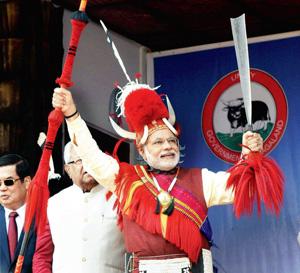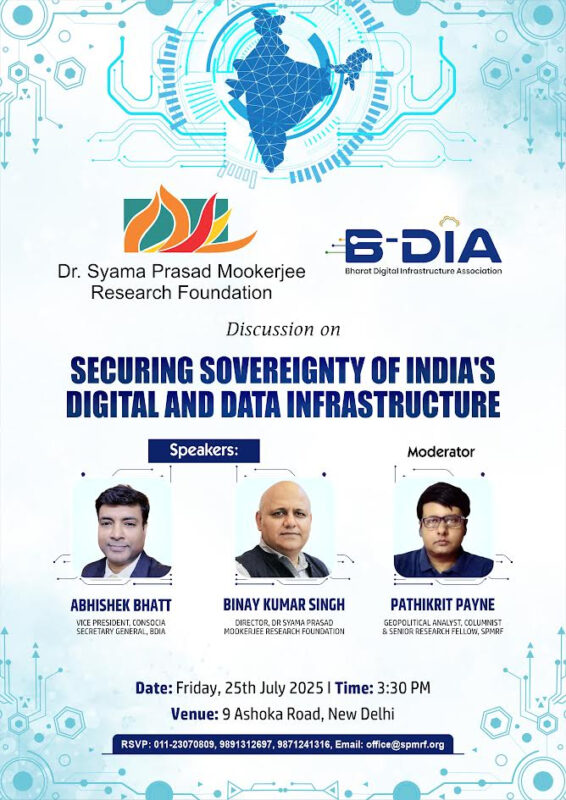By Sudarshan Ramabadran
“India will not develop till the Northeast develops. We are committed to realising the potential of the Northeast & accelerating its progress”, tweeted Prime Minister Narendra Modi before embarking on his maiden visit to the region in December 2014. Under Prime Minister Narendra Modi’s leadership Northeast India has witnessed increased impetus as it remains India’s pivot to her pragmatic and realistic policy of ‘Act East’.
The significance which the Northeastern region assumes amongst the Indian leadership is discernible in the recent bilateral meeting between the heads of Singapore and India. During the meeting between Prime Minister Narendra Modi and visiting Singaporean President Tony Tan Keng Yam, PM Modi sought Singaporean expertise to set up a skill development centre in Northeast India. Reportage which has emerged post the bilateral meeting, has excerpts of quotes from officials who have stated, “It is rare for north-eastern India to figure so prominently in foreign policy deliberations,” This perhaps shows the determination with which Government of India (GoI) is seeking to ensure all round sustainable development of the region. In his meeting with the Singapore President, PM Modi is also reported to have spoken in favour of greater air connectivity for the Northeastern region.
However seeking Singapore’s expertise has in no way been a one-off initiative on the part of GoI or PM Modi; whereas on the other hand consistent and decisive steps have been taken by GoI under PM Modi’s leadership to facilitate an ecosystem which will ensure all round sustainable development of the region. Taking cue from then Prime Minister Atal Bihari Vajpayee’s decision of allocating 10% of the country’s budget towards Northeast’s development; in its first budget, GoI had made a provision of Rs. 53,000 crores for the development of the eight north-eastern states. Among the 5Ts which were outlined by PM Modi as priorities, Tourism in one among them. Thus, in order to help the region script success in tourism, GoI has also taken substantive initiatives. Prominent among them being, to boost connectivity in the region, the GoI has made an allocation of Rs.28, 000 crores for starting 14 new railway lines. Plans are also in the pipeline to have a dedicated brand ambassador for the region and inviting film makers to extensively shoot in the region.
98 % of the Northeastern states also share their borders with some of India’s South Asian neighbours such as China, Myanmar, Thailand, Bangladesh etc. In view of this, another vital aspect, which the GoI is keen to improve, is its border infrastructure. Basic requirements such as road, power, and schools along the border in the region are being carefully paid attention to, for betterment. This is in all certainty part of PM Modi’s visionary strategy of reorienting India’s foreign policy towards stronger ties with Southeast and East Asia.
GoI has also advanced its plans for the Northeast in terms of better relations with Bangladesh and Myanmar. During his visit to Tripura, PM Modi envisioned an economic corridor that would be established using Northeast India, Myanmar, and the adjoining regions. GoI has also signed an agreement with Japan to open an economic corridor with Myanmar. Key transit initiatives between Northeast India and Myanmar – the Kaladan Multi-Modal Transport Project and the India-Myanmar-Thailand trilateral highway are also on track to be completed by 2016. This too is part of GoI’s long term initiative to favour greater economic linkages between Northeastern states and adjoining countries such as Thailand, Myanmar and Bangladesh to ensure greater economic development in the Northeastern region. Japan too has been roped in to be a major infrastructure development partner, PM Modi’s visit to Japan in September 2014 affirmed his commitment to joint projects for the region in a variety of sectors.
Furthering the cause of development of the region, in September 2014, the Prime Minister’s Office had directed the Project Monitoring Group (PMG) to fast track development projects in the Northeast region. Towards this, GoI had already identified 21 such key projects worth over Rs1 lakh crore for ensuring faster clearances to them. Of 21 projects, nine projects are from Arunachal Pradesh, seven from Assam, three from Tripura and one each from Meghalaya and Manipur. More than 50 per cent of these projects are power projects including that of transmission lines followed by five railway projects, four related to petroleum and natural gas and one related to cement plant. In addition, to ensure speedy implementation of the GoI’s social and economic programmes, eight union ministers will visit one of the eight northeastern states every fortnight.
GoI has also set out on a vital task to prepare India for a knowledge future. To improve power and digital connectivity, Rs. 5,000 crores had been earmarked for North-eastern states to strengthen intra-state power transmission and distribution systems. A similar amount had also been allocated for boosting 2G mobile connectivity for the eight states.
“North-eastern region can be the capital of India’s organic agriculture.” said PM Modi during his visit to the region, towards this GoI had also earmarked Rs.100 crores as part of its push to encourage organic farming in the region. It was during his visit to Arunachal Pradesh during the campaign for Lok Sabha elections, PM Modi coined 3Hs: Herbal, Horticulture and Handicraft. Recognising that 40% horticulture produce in the Northeast gets wasted due to non-availability of proper storage, GoI is also planning to rope in some food processing industries to set up their units in the region and avail the benefits of horticulture products.
Education and youth led development have also emerged as priorities. As part of student and teacher exchange programmes, GoI has also introduced the Ishan Uday special scholarships for 10,000 students, and the Ishan Vikas scheme for 2000 students and 500 faculty members from colleges of the Northeast to visit other parts of the country every year.
Despite the presence of abundant natural resources in the region and huge investment opportunities, the region has been deprived of growth and development. This is precisely because there is no onus on the leadership in each state for a sense of ownership and responsibilities over development of the region as a whole. It is towards this that recently before the 1st NITI Aayog meeting with the state CMs, PM Modi held a brief meeting with all Northeastern state CMs which underscores the importance which GoI attaches to Cooperative Federalism, which in essence means, for India to develop, states must develop. A vital prerequisite in fulfilling India’s renewed Act East Policy is to look and act towards Eastern India and that is precisely what is being actively pursued under PM Modi.
(The author is a Research Associate with the India Foundation, New Delhi, his areas of interest are international affairs, India’s neighbourhood and governance)
(The views expressed are the author's own and do not necessarily reflect the position of the organisation)


